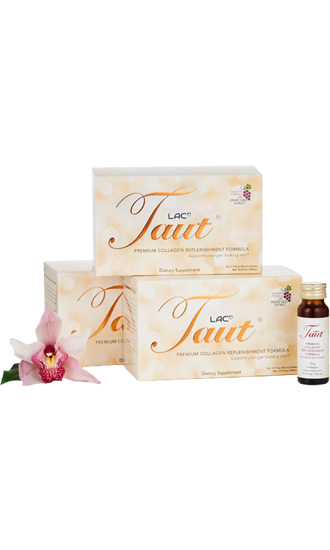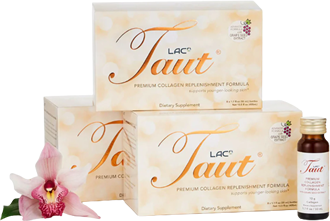Dermarolling: All You Need to Know About Derma Rolling & Your Microneedle Roller

The thought of rolling hundreds of tiny needles across your face might not sound totally appealing but, when you hear and see the results it has for your skin, you might be swayed.
Dermarolling and microneedling are popular facials that can help fight the signs of aging and beat pigmentation, but it's understandable to wonder if the needles are really worth it!
If you're keen to delve into the world of dermarolling but don't know where to start, this is the guide for you. Keep reading to find out what exactly dermarolling is, how it works, how to safely do it at home, and how to maximize your results for a more youthful and radiant complexion.
Derma Roller vs. Micro Needle: What's The Difference?
If you're caught up in hearing all about microneedling and dermarolling and wondering what the difference is, you can rest assured that they are essentially the same thing. A derma roller is a device used for the treatment, while the term "microneedling" describes the method itself.
However, the term microneedling is used more often to describe the treatments you would receive at a dermatologist's office, which use longer needles to penetrate deeper into the dermis. It makes sense that these longer needles are best left to the board-certified professionals!
Dermarolling, on the other hand, is the term most often used to describe the treatment you do at home with your own derma roller device.

How Does Dermarolling Work?
Dermarolling is a facial treatment that uses a handheld tool to roll tiny needles over the surface of the skin (in between layers of soothing serum). But why on earth would anyone want to roll needles across their face on a regular basis?
The idea behind dermarolling is that those tiny needles create microscopic wounds on the outer layer of the skin, stimulating your body to produce more collagen for rapid skin repair. Clever, right?
This is a form of collagen induction therapy that can help revitalize your complexion, reduce wrinkles, and improve pigmentation issues (more on this later).
If you are afraid of needles, you can feel safe in the knowledge that these aren't your typical injection needles, but more like tiny pin-pricks. The needles on a derma roller are very small and short, with the typical needle size for at-home derma rollers being about 0.25 mm.
Your next question might understandably be "does it hurt?" Luckily, this treatment shouldn't hurt at all, but it may feel a little odd or uncomfortable while you get used to it. Your discomfort may vary depending on your pain tolerance!
What Are The Benefits of Dermarolling?
So now that we know what it is, let's take a look at why people love dermarolling their skin:
Boosts Collagen and Elastin Production
The main and most coveted effect of dermarolling is the enhancement of collagen and elastin production, which leads to a firmer and more youthful complexion. Collagen and elastin, as you may know, are the two proteins essential to the structure of your skin. These proteins decline in our bodies as we age, and our skin loses firmness and radiance as a result.
Most anti-aging procedures aim to boost your supplies of collagen, and dermarolling is no different. By creating tiny pinpricks on the surface of your skin, the rolling process triggers your fibroblasts (cells responsible for wound healing) to create more collagen. When this collagen is produced, your skin gets a boost of anti-aging goodness!
Peer-reviewed studies have shown that microneedling facials can boost your collagen by up to 400 percent. While your at-home procedures might have a smaller impact, they can still trigger a significant boost. 1
Thanks to this extra supply of elastin and collagen, your derma roller can help lift and tone sagging skin for a more toned, taut appearance.
Reduces Fine Lines and Wrinkles
Since dermarolling improves your natural collagen production and boosts blood flow in your face, it can have a significant impact on the appearance of lines and wrinkles. Although deep-set wrinkles are always difficult to treat without fillers, fine lines can be significantly reduced by collagen treatments like dermarolling.
With more collagen in your body, your skin will appear plumper, reducing the appearance of fine lines on your face, giving you a more youthful look. Fine lines such as crow's feet or early laugh lines can be treated quite effectively with this procedure, provided it is combined with a proper skincare routine, of course!

Evens Skin Tone & Treats Pigmentation
Another prominent reason people seek derma rollers or microneedling treatments is to even out their skin tone and reduce dark spots.
This is because the process breaks up clusters of melanin, the brown pigment responsible for pigmentation in the skin (e.g. freckles). It also helps increase skin cell turnover, which basically encourages the growth of newer, healthier, brighter skin. 2
Reduces Acne Scars
Good news for acne-prone skin types: Peer-reviewed studies have shown that derma rolling and micro-needling can help reduce scar tissue from acne, improving overall skin texture. 3
By speeding up your skin's natural healing process, derma rolling evens out your skin tone and naturally reduces the appearance of scars – particularly those small indented scars that may be lingering on your face after a breakout. 4
When it comes to reducing scarring, microneedling with a greater needle depth tends to have the best results, but an at-home version can certainly help.
Choosing The Right Derma Roller
If you want to safely dermaroll at home, it's essential to choose the right equipment.
When shopping for your perfect at-home dermaroller, look for one that is made from either stainless steel or titanium, and avoid cheap plastic devices!
Titanium is stronger and more durable, but stainless steel options often come with replaceable heads, allowing easy needle replacement when they become dull. Just be sure to replace them often, as dull needles can cause excessive irritation and the results won't be as effective.
Lastly, ensure the needle length is under 0.5 mm, with a thickness under 0.3 mm, to avoid damaging the skin during the treatment. Longer or thicker needles come with a higher risk of causing irritation and lasting damage.

How To Use A Derma Roller At Home
Ready to try it for yourself? Here's how it works in your skin care routine:
1. Cleanse & Tone
Start by gently cleansing your face and neck to remove any dirt and oil that have built up throughout the day. Follow up with a hydrating toner that will remove any remaining impurities and ensure you have a clean, smooth base to work from.
2. Apply Serum
Before you start the derma rolling process, it's important to apply serum to moisten your skin and nourish it with hydrating and protective ingredients.
Choose a gentle serum that targets your specific skin concerns, avoiding any harsh ingredients like retinol or potent vitamin C serums. A hyaluronic acid serum is a great option as it hydrates while improving overall tone and texture.
If you are using derma rolling to target acne, the right serum will contain gentle antioxidants that can brighten your skin and improve its tone and texture.
Taut Intensive Recovery Serum is packed with 7 botanical extracts that have antioxidant and anti-inflammatory properties, designed to repair stressed, environmentally damaged skin and reinforce your skin barrier.
Our unique serum hydrates your skin for a plumper appearance, repairs the skin barrier for a firmer texture, and protects against external toxins like UV light and pollution. It's the perfect serum to use before dermarolling, offering triple-action support to fight the signs of aging and improve your natural radiance.
3. Gently Roll With Your Derma Roller
Now that your serum has absorbed into your skin, it's time to put your derma roller to use! There are three types of movement that you'll take with the device: vertical, horizontal, and diagonal.
First, you should start by gently rolling the device up and down in a vertical movement, over your forehead, cheeks, chin, and neck. Do this once in each direction. When rolling, be careful not to put too much pressure on your skin – this procedure shouldn't cause any pain!
Next, roll the device side to side horizontally across the same areas, then finish by repeating the action diagonally.
Make sure you avoid the eye area and be extra gentle around the nose and upper lip area, as they can be especially sensitive. It's also important that you don't apply too much pressure, and don't spend too long rolling either. You want to spend a maximum of two minutes on this, total.

4. Finish Off With Another Serum or Mask
Now that the hard part is over, you can finish off your routine with a little pampering TLC. As you have just created a series of microscopic wounds on the surface of the skin, it's going to need a little soothing nourishment from a serum or mask to help speed up the recovery process.
At this stage, a soothing and hydrating serum with anti-aging ingredients like hyaluronic acid, collagen peptides, stem cells, or growth factors will enhance the recovery process and maximize the results of your procedure. People with sensitive skin types should do a patch test of any new serum post-dermarolling to avoid any harsh reactions.
A sheet mask is another great option for post-dermarolling or microneedling, as these types of masks essentially drench your skin in serum for an extended period of time and maximize the impact a serum can have on your face.
Taut Collagen Mask is a sheet mask infused with a serum containing collagen peptides, hyaluronic acid, botanical squalene, and vitamin C. The mask's collagen content helps speed up the wound-healing process and maximize the collagen boost that your procedure can give you.
Hyaluronic acid will infuse your skin with the moisture it needs post-treatment, while botanical squalene and vitamin C can help brighten your skin and protect against pigmentation and UV damage. Together, the ingredients in this luxurious serum-infused sheet mask make it the ultimate post-dermarolling pamper session!
5. Aftercare
When it comes to rolling and needling, there are a few other important things to note in the hours following.
First up, clean and disinfect your derma roller after using it, so it's ready for your next session. You can use an alcohol solution to keep dirt and bacteria at bay.
To avoid any potential skin irritation or inflammation, stay away from hot showers, strenuous exercise (i.e. sweat), and makeup for the hours after derma rolling. This procedure can also leave your skin extra sensitive to UV light and sun damage, so make sure you lather on some sunscreen the morning after.
How To Get The Most Out of Dermarolling
Now that you know how to safely derma roll from your own home, we are sure you are excited to get started! Before you get going, here are a few other things to be aware of which will help you maximize your results:
Keep Up The Routine
When it comes to at-home dermarolling, it can take about three weeks to get visible results. That's why it's important to be consistent with your routine and use your derma roller 2–3 times a week.
If you have sensitive skin and you are trying it for the first time, however, try starting off with just one session per week to see how your skin reacts to it. Once you are sure your skin is fine with the treatment, you can go ahead and add it into your routine more frequently (no more than three times a week).
Avoid Harsh Ingredients Before & After Treatments
To avoid extra irritation or an adverse reaction to the treatment, it's important that you stick to gentle, non-irritating skincare in the days leading up to using your derma roller.
Avoid using any chemical exfoliants, such as salicylic acid or beta-hydroxy acids, on the day of derma rolling to prevent irritation. Potent vitamin C serums can also cause some irritation and sensitivity, so avoid these before rolling if you have sensitive skin.
Experts also recommend that you avoid retinol serums and creams up to 5 days before dermarolling, as a retinol serum can cause some burning and irritation, and these impacts can be aggravated by the pinpricks created during derma rolling.
Know When To Avoid Dermarolling
Unfortunately, derma rolling is not for everyone. If you have eczema or psoriasis and are having a flare-up of symptoms, you should avoid using derma rollers. The same goes for other types of irritation or inflammation such as sunburn, as inflamed skin should never be derma rolled.
Dermarolling At Home: The Verdict
When it comes to achieving the best anti-aging and skin-brightening results, the verdict generally favors professional microneedling facials that penetrate deeper into the skin. However, beauty experts still agree that at-home derma rolling can have plenty of positive effects on your skin. If you're going to try it for yourself, make sure you buy your derma roller from a reputable source, and don't try anything longer than 0.5 mm – leave the longer needles to the board-certified professionals, please!
Over the course of three weeks, dermarolling can enhance skin rejuvenation by boosting collagen production, reducing acne scars, and minimizing the appearance of fine lines and wrinkles. If you want to maximize your efforts, we recommend complementing your routine with an inside-out solution.
A supplement can double your chances of boosting collagen production and achieving the glowy, youthful skin you're looking for. Supplements like Taut Liquid Collagen work to trigger the wound repair response in your fibroblasts without causing damage to the surface of your skin.
When you ingest properly hydrolyzed collagen peptides, your body detects the peptides in your bloodstream and triggers fibroblasts to produce collagen in the dermis. The result? Firmer, smoother skin!
Our formula combines hydrolyzed marine collagen peptides with elastin peptides, hyaluronic acid, grape seed extract, ceramide, vitamin C, and vitamin B6 to deliver maximum skin regeneration, hydration, and radiance.
Revitalize Your Skin From Within With Taut's Three-Week Transformation Program
It's true that three weeks of derma rolling can have a visible impact on your skin's health and radiance, smoothing out wrinkles and reducing pigmentation and scars by boosting the production of collagen in your dermis.
Whether you want to improve your derma rolling results or you want to avoid needles and skip the roller completely, a collagen supplement can help. Three weeks is also the perfect time for our liquid collagen drink to get to work, either alongside derma rolling or as a standalone approach to achieving younger-looking skin.
Our Intense Transformation Program combines 24 bottles of Taut Liquid Collagen at a discounted rate, offering the perfect package for anyone new to collagen supplements or for anyone whose skin needs an extra boost. When taken daily over the course of three weeks, our formula offers your body the ingredients it needs to plump up your skin, reduce wrinkles, and minimize pigmentation and scarring.
Even better, the supplement works from within, meaning it can work wonders for your entire body! This is perfect if you have any stretch marks or eczema flare-ups that need a little help healing, or if you want to make your hair and nails stronger, too.
All in all, dermarolling is a great treatment to add to your skincare routine if you want to fight the signs of aging on your face and neck. Combine it with a collagen supplement, and your skin will thank you for it!
If you're unsure about which skincare routine is best for you, try our skincare quiz to get personalized recommendations. This quick and easy assessment will help identify the ideal programs tailored to your skin type and specific needs. Whether you're dealing with dryness, sensitivity, or other concerns, the quiz will guide you toward the right solutions for a healthier, glowing complexion.
References:









